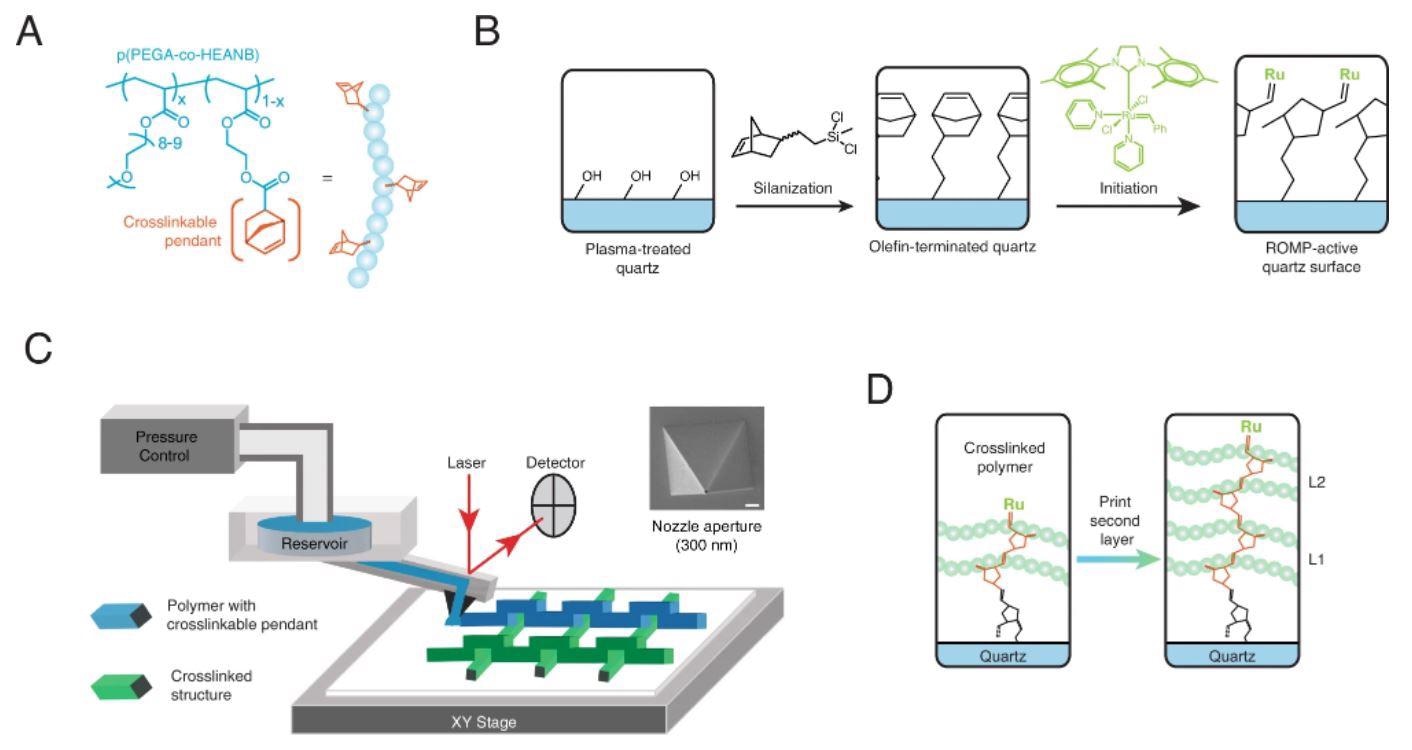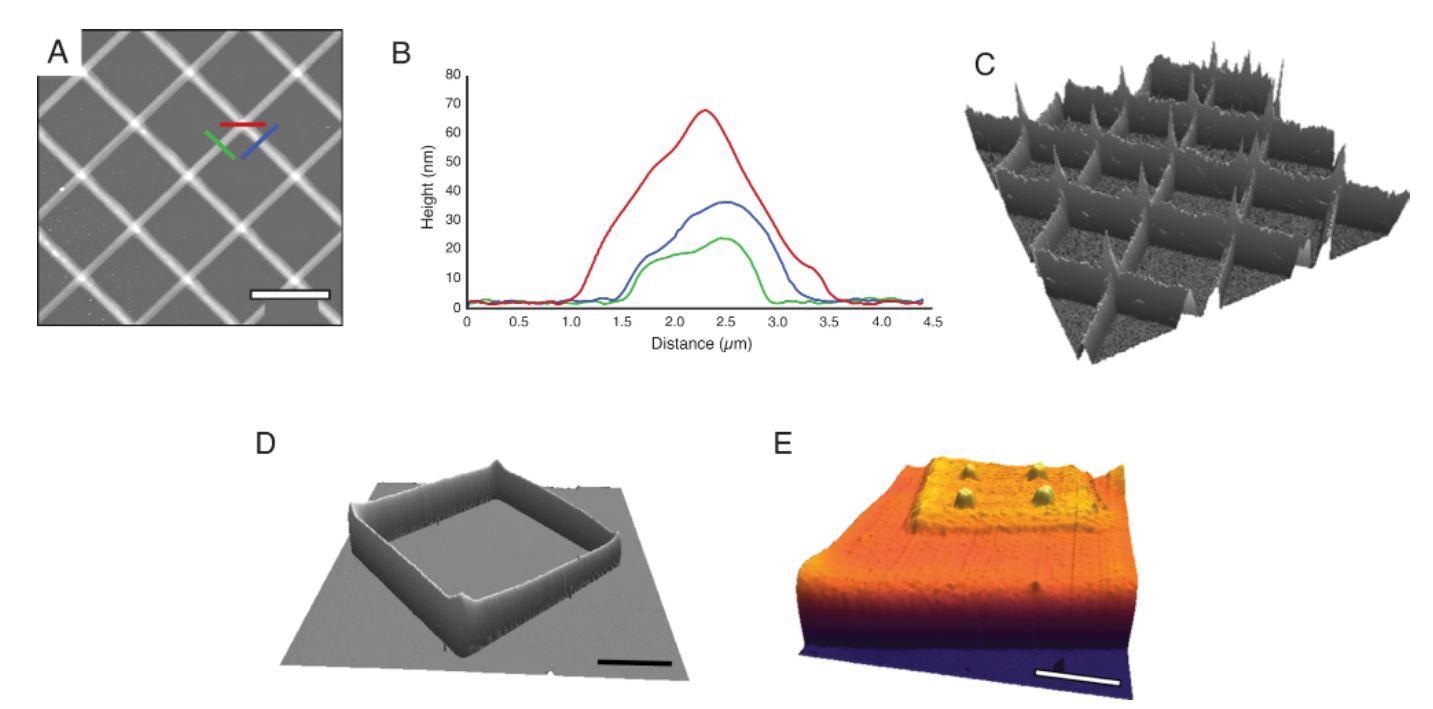The development of a 3D nanoprinting platform that allows the printing of polymer materials with remarkable control and nanometer spatial accuracy is the subject of a new study published in the journal Nature Communications.
Three-dimensional (3D) printing is a layer-by-layer processing technique that has found applications in a variety of fields, including tissue printing, aviation, and product engineering. To make use of the benefits of 3D printing at the micro and nanoscale, numerous approaches for downscaling 3D printing have been established during the last few decades.
Challenges Associated with 3D Nanoprinting
There has been a widespread interest in 3D printing items at the nanometer as it enables applications where specific functional features develop at the nanoscale.
Although 3D printing has modernized industrial production and development, its application to the fabrication of polymeric nanoscale materials remains a considerable issue, owing to the challenges associated with delivering the small quantities of material with high accuracy.
An effective and reliable 3D nanoprinting system must address many critical design variables, including significant spatial control over the deposition process, constant printing with few to no intermediate steps, and solvent-free material deposition to eliminate or minimize shrinking.

Schematic diagrams illustrating key steps in our 3D nanoprinting, including chemical crosslinking ink, surface modification and initiation, and the delivery of reactive ink to substrates to form 3D printed patterns.. A Structural formula of the crosslinking polymer, poly(polyethyleneglycol acrylate-co-hydroxyethylacrylate norbornene (p(PEGA-co-HEANB)), highlighting the crosslinkable pendant groups in orange. B Pre-functionalization of the surfaces with olefin-terminated SAM and initiated with the ROMP (ring-opening metathesis polymerization) catalyst Grubbs Generation III to enable Continuous Assembly of Polymers (CAP) upon delivery of p(PEGA-co-HEANB). C Schematic diagram illustrating the combined atomic force microscope (AFM) with microfluidic delivery, in realizing the CAP upon printing. The green material on the substrate shows crosslinked structures, while the blue is yet to be crosslinked. The inset scanning electron microscope image is of a FluidFM Nanopipette with a 300 nm aperture. Courtesy of Cytosurge AG. D Schematic of the resulting crosslinking formed after two layers of polymer have been deposited, showing the ability of the catalyst to continue crosslinking material. SEM scale bar: 2 µm. © Pattison, T. G. et al. (2022)
Development of a Novel 3D Nanoprinting Platform
In this work, researchers developed a 3D Nanoprinting technology that allows polymer materials to be printed with nanoscale spatial accuracy. The technique incorporates an atomic force microscope’s spatial precision, a microfluidic probe’s precise materials delivery, and solid-state continuous assembly and polymerization (CAP).
For nanoscale films and sheets, atomic force microscopy (AFM) is a useful characterization tool. This technology can provide high-resolution pictures and investigate local areas in both air (traditional AFM) and fluid (electrocatalytic AFM). The continuous assembly and polymerization (CAP) approach employs polymer crosslinkers with pendants, which generate highly crosslinked polymer sheets by surface-initiated polymerization (SIP) while retaining a high level of molecular flexibility due to the residual polymer side group activity.
Spatial Control and Precision of Polymer Materials
The researchers employed a combined AFM and microfluidic device to achieve spatial precision and accuracy in distributing macro crosslinkers (or polymeric inks) to the pre-functionalized substrate. The quantity of polymer supplied was regulated by changing the distribution parameters, such as pressure, velocity, and contact duration, in the microfluidic AFM platform. The AFM enabled precise movement by planning the polymeric ink’s path with nanoscale accuracy.
In contrast to previous efforts at 3D nanoprinting, this method may be used with a wide variety of polymeric composites, demonstrating great spatial precision and design accuracy owing to the quick assembly and polymerization after the distribution of the material. Furthermore, since the curing process happens at room temperature, the curing period is reduced and the material is more stable.

Atomic force microscopy of 3D nanoprinting following designed structures, highlighting the ability to form multilayered patterns atop of printed material. A 40 µm × 40 µm AFM topographic image of the printed cross-grids of crosslinked polymer. B Combined cursor profiles from three colored cursors indicated in A. C A 3D display of A with z scale 0–80 nm. D A 3D display of a 50 µm × 50 µm AFM topographic image of the 3D square structure with z scale 0–150 nm. E A 3D display of a 35 µm × 35 µm AFM topographic image of stacked cuboids with z scale 0–120 nm. Scale bar in A, D, and E: 10 µm. © Pattison, T. G. et al. (2022)
Important Findings of the Study
The researchers discovered that by adjusting the manufacturing settings, the breadth and height of printed materials could be readily adjusted. As the ejection rate of the polymer was almost steady under continuous reservoir pressure, the material’s height could be raised by slowing down the printing speed.
The polymeric ink was quickly cured on contact with the surface, resulting in exceptional accuracy of the 3D pattern. Because of the living nature of the linking processes, constant printing was possible without the need for additional catalysts or treatment, resulting in continuous delivery of materials in several layers. Variable print settings and complete control of the AFM-nanofluidic system were used to achieve high spatial selection and precision.
Future Perspective
In contrast to the optical-based 3D-printing techniques such as the two-photon laser process, this method allows for a broader range of applications because it can print multiple materials rather than just those containing photoconductive or photoactive substances. As a result, this technology can reduce the time necessary to manufacture compounds with photosensitive functional groups, thereby saving the overall time for 3D nanoprinting.
Future studies should concentrate on downsizing and production of overhanging components, which would need a quicker curing rate than the material delivery rate. This would enable the described 3D nanoprinting approach to be used in wearable electronics, optical systems, and biological sensors, among other applications.
News
Platelet-inspired nanoparticles could improve treatment of inflammatory diseases
Scientists have developed platelet-inspired nanoparticles that deliver anti-inflammatory drugs directly to brain-computer interface implants, doubling their effectiveness. Scientists have found a way to improve the performance of brain-computer interface (BCI) electrodes by delivering anti-inflammatory drugs directly [...]
After 150 years, a new chapter in cancer therapy is finally beginning
For decades, researchers have been looking for ways to destroy cancer cells in a targeted manner without further weakening the body. But for many patients whose immune system is severely impaired by chemotherapy or radiation, [...]
Older chemical libraries show promise for fighting resistant strains of COVID-19 virus
SARS‑CoV‑2, the virus that causes COVID-19, continues to mutate, with some newer strains becoming less responsive to current antiviral treatments like Paxlovid. Now, University of California San Diego scientists and an international team of [...]
Lower doses of immunotherapy for skin cancer give better results, study suggests
According to a new study, lower doses of approved immunotherapy for malignant melanoma can give better results against tumors, while reducing side effects. This is reported by researchers at Karolinska Institutet in the Journal of the National [...]
Researchers highlight five pathways through which microplastics can harm the brain
Microplastics could be fueling neurodegenerative diseases like Alzheimer's and Parkinson's, with a new study highlighting five ways microplastics can trigger inflammation and damage in the brain. More than 57 million people live with dementia, [...]
Tiny Metal Nanodots Obliterate Cancer Cells While Largely Sparing Healthy Tissue
Scientists have developed tiny metal-oxide particles that push cancer cells past their stress limits while sparing healthy tissue. An international team led by RMIT University has developed tiny particles called nanodots, crafted from a metallic compound, [...]
Gold Nanoclusters Could Supercharge Quantum Computers
Researchers found that gold “super atoms” can behave like the atoms in top-tier quantum systems—only far easier to scale. These tiny clusters can be customized at the molecular level, offering a powerful, tunable foundation [...]
A single shot of HPV vaccine may be enough to fight cervical cancer, study finds
WASHINGTON -- A single HPV vaccination appears just as effective as two doses at preventing the viral infection that causes cervical cancer, researchers reported Wednesday. HPV, or human papillomavirus, is very common and spread [...]
New technique overcomes technological barrier in 3D brain imaging
Scientists at the Swiss Light Source SLS have succeeded in mapping a piece of brain tissue in 3D at unprecedented resolution using X-rays, non-destructively. The breakthrough overcomes a long-standing technological barrier that had limited [...]
Scientists Uncover Hidden Blood Pattern in Long COVID
Researchers found persistent microclot and NET structures in Long COVID blood that may explain long-lasting symptoms. Researchers examining Long COVID have identified a structural connection between circulating microclots and neutrophil extracellular traps (NETs). The [...]
This Cellular Trick Helps Cancer Spread, but Could Also Stop It
Groups of normal cbiells can sense far into their surroundings, helping explain cancer cell migration. Understanding this ability could lead to new ways to limit tumor spread. The tale of the princess and the [...]
New mRNA therapy targets drug-resistant pneumonia
Bacteria that multiply on surfaces are a major headache in health care when they gain a foothold on, for example, implants or in catheters. Researchers at Chalmers University of Technology in Sweden have found [...]
Current Heart Health Guidelines Are Failing To Catch a Deadly Genetic Killer
New research reveals that standard screening misses most people with a common inherited cholesterol disorder. A Mayo Clinic study reports that current genetic screening guidelines overlook most people who have familial hypercholesterolemia, an inherited disorder that [...]
Scientists Identify the Evolutionary “Purpose” of Consciousness
Summary: Researchers at Ruhr University Bochum explore why consciousness evolved and why different species developed it in distinct ways. By comparing humans with birds, they show that complex awareness may arise through different neural architectures yet [...]
Novel mRNA therapy curbs antibiotic-resistant infections in preclinical lung models
Researchers at the Icahn School of Medicine at Mount Sinai and collaborators have reported early success with a novel mRNA-based therapy designed to combat antibiotic-resistant bacteria. The findings, published in Nature Biotechnology, show that in [...]
New skin-permeable polymer delivers insulin without needles
A breakthrough zwitterionic polymer slips through the skin’s toughest barriers, carrying insulin deep into tissue and normalizing blood sugar, offering patients a painless alternative to daily injections. A recent study published in the journal Nature examines [...]





















